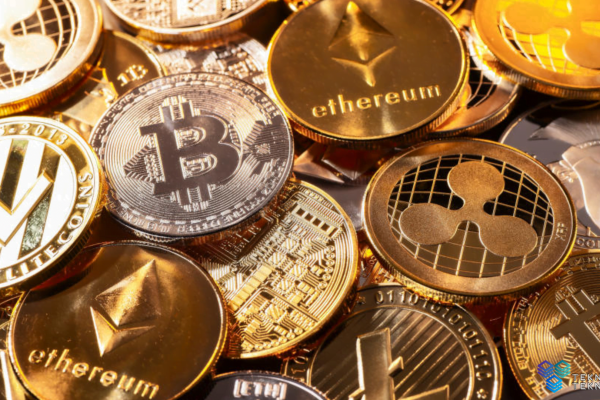It’s pretty hard to go anywhere online without seeing an advertisement about investing. Whether it’s for stocks, bonds, some sort of savings account, or even precious metals, it can end up leaving us with more question marks than answers a lot of the time. That’s why turning to the internet can be so helpful in these sorts of situations, right?
Part of the trouble is figuring out which claims are true versus which ones aren’t. So many supposed facts are thrown out there, it’s only natural to be a bit skeptical. Today, we’ll unpack some of the stuff that you may have already heard about precious metals and see how much of it is true and how much isn’t.
Because of that, guides like this one are even more important. So, keep reading to learn more about some of the specifics when it comes to both purchasing precious metals and using them as an asset for your investment portfolio. Thankfully, it’s really not that complicated!
Why Precious Metals?
The first question that most folks have when they hear about this in the first place is why they would even want to buy or invest in precious metals. Sure, we all know that a lot of jewelry is made out of silver and gold, but so what? Turns out, there’s a lot more than meets the eye here.
To a certain extent, it might seem like it makes more sense to invest in diamonds or something instead. However, as you can read about in this article, that often isn’t actually the case. Generally speaking, there is more demand for precious metals all year round. Why is that?
As you can probably already guess, a lot of it comes down to the general supply and demand at play here. You see, there will almost never be a huge decrease in demand for precious metals, and there are a few reasons for that. They’re used in a whole lot more than jewelry, as it turns out!
Obviously, it’ll be a bit different depending on the precious metal that you’re interested in. Silver, for one example, is used for electronics and for some coins along with jewelry. Because it’s a bit more of a common metal in comparison to the other ones in this category, it doesn’t have the highest value. That does make it more accessible for consumers, though.
Gold is the most common for investors because it is sort of in the “middle” between silver and the platinum family, which is quite expensive and much rarer. So, gold allows investors to store their wealth in a stable fashion without being too inaccessible.
As far as what it’s used in, it’s somewhat similar to silver in that a lot of jewelry and currency contain some gold. There’s some coverage on that on the Investors Circle website, if you’re curious to know more of the details. The main idea, though, is that it’s also an important component in a lot of technology as well as cultural practices around the world.
You don’t need to know the specifics there. Rather, it’s just a way to help us understand why gold remains such a valuable investment. There’s pretty much never a time where it’s not valuable.
Platinum is the final type of precious metal that is typically used for investments, with palladium part of its family of metals on the periodic table. They’re both considered quite rare thanks to their unique shine and the fact that they can be used to manufactures cars that leave less of a carbon footprint.
How it Works
When it comes to the “how” of investing in gold, things get a little bit more complicated. That’s because we have so many choices available to us in this department. Besides that, there’s just so much to learn about that it can get difficult to know what to listen to.
After all, as you can see on this page, https://www.jstor.org/stable/2979294, there’s a lot of history behind investing in gold. While that certainly doesn’t mean you need to go study every paper or article published back in the nineteenth century, it at least lets us know that there’s a lot of precedent here that demonstrates how much this type of asset is worth it.
These days, the most common ways to get involved are by directly buying bullion or by converting something like a 401(k) account into one that’s specialized for holding gold and other precious metals. Those are pretty popular since they serve us in a few ways – they help us prepare for retirement as well as keep our wealth stored in an asset that doesn’t lose value due to inflation like paper currency does.
Thankfully, the conversion process isn’t too difficult either. While it might be helpful to check out some of the resources here today to get a handle on things, this isn’t all that unusual for anything in investing. Responsibly researching what we plan to invest in never hurts.
Once you’ve sorted out the method you want to use to start, be that buying stocks for related companies, getting bullion directly, converting a 401(k), or something else, it’s time to look into what brokers you want to work with. Realistically, this is the tough part, and why it’s a good idea to use the internet as a resource.
After all, it’s the power of reviews that allows us to get a gauge for whether a company is legit or not. Unfortunately, a lot of the ones that you can find online aren’t entirely honest about what they’re selling. That’s why it’s so important to be vigilant when you’re reading content about this stuff.
When you’ve selected a broker, it’s as easy as purchasing what you want. Then, you’ll need to store it. For bullion, that’ll usually be through a custodian, although some folks opt to simply take it home and store it there.
Much of the process will be up to you, so you will need to decide for yourself which options you prefer and how you want to go about it. You can take your time – don’t feel rushed or pressured into grabbing whatever random piece of gold or silver jewelry that you see just to have it be an “investment.”
It’s more than okay to sit on it for a while before you make your final choice. Investing isn’t a race, and even if it was, slow and steady wins it – not fast and reckless. That’s especially true for something like a 401(k) conversion.
Since our 401(k) accounts are a way that we prepare for our retirement age, we should be mindful of how we utilize those funds until we reach our golden years. There are absolutely times when converting it into gold can be beneficial. Just be aware of what that looks like, and don’t do it if it won’t be a good move for you financially.
You might even want to consult with an expert before you take the plunge, although this isn’t always necessary. As long as you’re doing what you know to be best for your financial health and well-being, then you should be all set!



